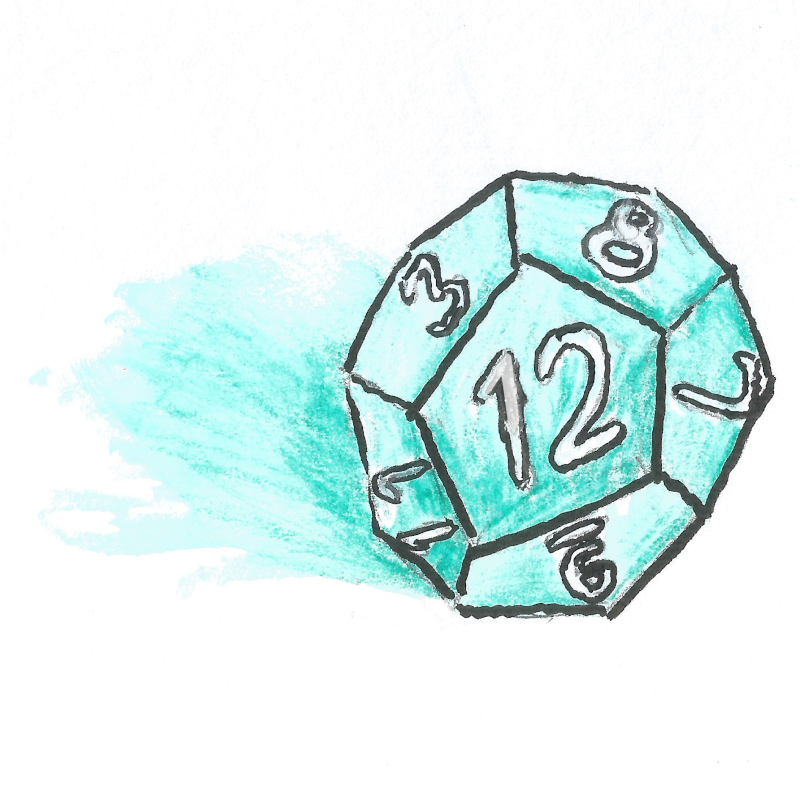I often write boxed text for new in-game locations. I find it easier to think through the sights, smells, and other sensations during GM prep and write them out, rather than improv’ing when I’m trying to write a game. Here’s one such location.
Druidic Wayshrine
The trail rambles its way into a wooded area, which seems to spread out for a good ways in every direction. White blaze is neatly painted on the trees every 10 yards or so, but you hardly need it. The dirt path is well-trod, even under a smattering of orange and red leaves, which snap and crunch with every few steps you take.
About half a mile into your trek, you notice the trees becoming more dense and green. You notice moss, something you didn’t see when you first started the trail. But now, it’s thicker on every rock and tree trunk you pass. Eventually, the light dims and the leaves at eye level grow more sparse as the canopy grows denser.
Soon, you see why. In a cramped clearing up ahead, the dirt of the forest floor gives way to a tiled foundation. A narrow stone gazebo rises out of it–all in one piece, as if grown from the ground. It has three open archways; between the archways, the stone forms a latticework of rounded, narrow diamond shapes. A cool, babbling spring runs through the stones of the druidic wayshrine, collecting in a small pool under the gazebo.
The town has added its own embellishments. Grape vines covered with dewy purple and golden fruit weave their ways up the lattice. Wooden benches–with nary a scratch on them–surround the shrine. To one side of the shrine, an intricately carved wooden arbor hosts a mass of wild muscadines. One corner of the clearing is dominated by mulberry boughs, filled with plump red clusters of berries. And dotted along the edge of the wood are blackberry bushes and persimmon trees. It seems as if other travelers have helped themselves to the food along the way.
Behind the wayshrine, the trail continues deeper into the woods, but there’s a wooden signpost stuck in the dead center of the trail.
- The signpost simply says, “trail closed.”
- Once per day, drinking from the spring will restore health and reduce status effects.
- Eating the fruit will reduce the total cost of rations for the party by 1 for the day.
- Wolf attacks seem to be increasing in the woods and meadows around the peak, where sheep are herded. There is a chance a hiker might encounter a small pack of wolves past the wayshrine; worse if they are traveling at night.
Onsen
You ignore the signpost and push further into the wood. As you leave the wayshrine’s little clearing, the wood becomes more sparse again, filled with yellows and oranges and reds instead of deep greens. The trail also becomes more steep and rocky, heading up the mountain.
About an hour later, you climb up past the treeline. The rocky peak towers over you, and you’re no longer sheltered from the crisp breeze. You pull your traveling clothes a little more tightly around you and press on.
About thirty minutes later, as you follow a bend around a sheer rock cliff, you come upon a welcome sight: a natural onsen. Rough wooden walls made out of whole trees, stained deep brown, separate the different pools and provide some shelter. Some of the pools extend back into the mountain, under rock outcroppings and into large, airy caves. A small wooden shack sits out front.
Resting for a few hours in the onsen may cure certain status effects and give bonuses to certain types of rolls (e.g., the next save or condition check).
The Peak
As you pass the onsen, the climb becomes a little rougher. The trail curves a little more tightly as the mountain you’re circling becomes narrower. You travel another hour or so, and the ground begins to flatten out a bit, coming to more of a dome that a point.
At this point, you see something concerning: up on the top of one of the craggy rocks on the peak sits a massive bird’s nest, built from tree branches and leaves. It’s big enough that your entire party could comfortably fit into it.
At the top of the peak sits the Roc, a massive bird. If the players don’t fight it now, it may harass them later in their travels through the highlands. It will be present during the evening and night, but will leave to hunt during the morning and afternoon.
